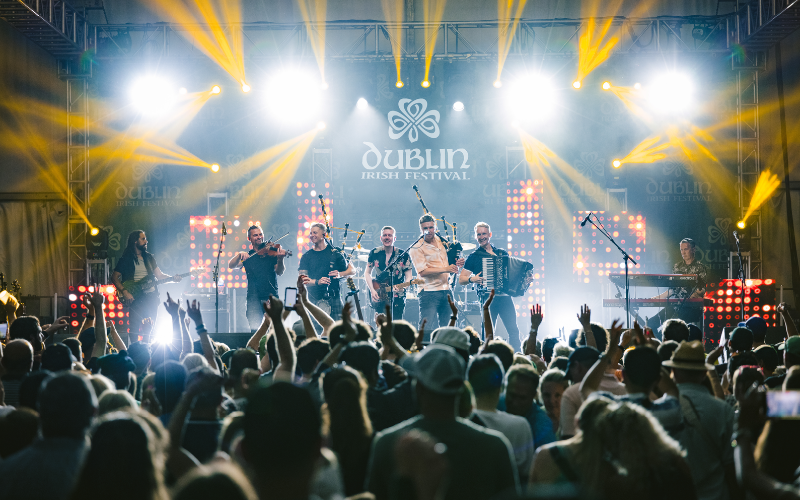The Irish Labour Party may be close to collapse after one poll taken by the Irish Sunday Times showed their support at only 4 per cent going into the Friday 26th election.
Two other polls have them at 8 per cent and 6 per cent far off their 2011 figure of 19 per cent. In previous elections the minority party in Coalition have been wiped out, the Greens and the Progressive Democrats the two latest examples.
The Labour party continues to suffer from the view of their left wing supporters that they allowed the Fine Gael led coalition government they were part of to govern too far to the right. Meanwhile the Fianna Fáil party under Micheál Martin looks set to put in a strong performance in the Irish general election to be held on Friday, with a large possibility of becoming part of the next government.
The latest opinion poll conducted by the Millward Brown company for the Sunday Independent shows that the "Soldiers of Destiny" who lost a staggering 51 Dáil seats in the last general election in 2011 when they were balmed for the economic collapse are about to make a partial comeback.
Going into this election with only 21 representatives in Dáíl Éireann, Martin is now likely to head up a parliamentary party numbering in the mid-30s or perhaps higher. 79 seats are needed for a majority.
The poll shows Fianna Fáil up one point on the last Millward Brown poll to 23 percent, only four points behind the main government party, Fine Gael, which is unchanged at 27 per cent. Labour, the junior partners in the outgoing coalition, are also unchanged but at a lowly 6 percent.
Sinn Féin is down two points to 19 percent while Independents and smaller parties go up one point to 25 percent. Figures for fringe parties and groups are as follows - People Before Profit/Anti-Austerity Alliance (PBP/AAA): five percent; Social Democrats: four percent; Green Party: two percent; Renua: two percent.By teatime on Saturday, RTE News was reporting on a Red C poll commissioned by the Sunday Business Post which showed Labour at a modest but not insignificant eight percent.
Although that marked a drop of one percentage point from the previous Red C survey, it suggested that the party would not be completely massacred. In 2007, for example, Labour came back with 20 TDs on a vote-share of 10.1 percent.
The latest Red C poll shows Fine Gael rising four points to 30 percent while Fianna Fáil and Sinn Féin have both gone down one point to 18 and 16 percent respectively, while the Independents and Others also dropped a single point, to 28 percent.
The weekend had started very badly for Labour with another poll commissioned for the Irish edition of the Sunday Times placing the party at a disastrous four percent, one point behind the far-left PBP/AAA. The survey was carried out by the Behaviour & Attitudes company and, unusually, the main details were leaked on Friday night.
Despite her party's poor showing, Labour leader Joan Burton adopted a defiant stance, stating that she had never shirked a fight before and wasn't about to do so now.
There was good news for Fine Gael, who went from 28 to 30 percent. It hadn't been a great week for Enda Kenny and his team up to that point.
The impression coming across from Fine Gael at the start of the campaign was that, having steered the economy through an economic storm and into calmer waters, they felt that the public would be anxious to express their gratitude and fearful of letting anyone else take over the helm at this stage.
No doubt there is a significant element of the electorate who do not want to change what they regard as a successful team, but there is a sizeable proportion also which still feels it is suffering from the austerity measures of recent years.
There was further positive news for the main opposition party in the Sunday Times poll, as Fianna Fáil went up two points to 22 percent, while Sinn Féin dropped two, down to 15.
It had been expected that support for the "Independents and Others" would decline significantly as Election Day approached. This rather complacent assumption was based on the logic that voters had begun to focus on the formation of a government and would turn away from the "wild cards". It didn't happen in this survey, which saw support for that category rising two points to 29 percent. People's faith in the established parties is still shaky.
It's curtains for Labour if the poll in the Sunday Times/Millward Brown poll turns out to be accurate. Having secured 19.4 percent of first preference votes in the last general election, the apparent drop in support is quite startling.
In the 2011 election five years ago, the electorate took it out on Fianna Fáil who were seen as having mishandled the economy during their previous 14 years in power. At the same time Fine Gael got 76 TDs elected and Labour came back with 37 out of a total Dáil membership at the time of 166.
Could it be that the vengeful instincts of the voters are focused on Labour this time and that the party will have only a mere handful of deputies in the new Dáil?
It is never a good idea to rush to judgment where Irish politics is concerned. Micheál Martin and his friends like to point out that Fianna Fáil emerged as the largest party with 25.3 percent of the vote in the May 2014 local elections, despite the previous five polls showing FF in the low twenties.
Sinn Féin, which secured 9.9 percent of first preferences in the 2011 general election, now looks set to double its Dáil representation from 14 up to 28 seats or thereabouts. The party led by Gerry Adams has a strong chance of winning two seats in each of the constituencies located along the border with Northern Ireland. It is also expected to do well in Dublin where its left-wing message is said to be getting a good response.
The various parties and Independent candidates will go into overdrive for the last few days of the campaign, seeking to maximise their support at the ballot-box. The one issue that remains unclear is the likely composition of the next government.
Given the misfortunes of the Labour Party, the chances of the outgoing coalition returning to office are distinctly problematic. Dáil membership has been reduced slightly but whoever wants to be Taoiseach will have to get the backing of at least 79 TDs.
If Labour has a really poor performance on Election Day, the party may decide that a period of renewal on the opposition benches is required. But even if the pessimists are wrong, it will be surprising if the current coalition parties have a total of 65 TDs between them when the votes are counted.
That would mean recruiting at least 14 and maybe 20 from, say, the "Independents and Others" category, to secure anything like a comfortable majority. It's by no means impossible, as many Independents and smaller parties would be very much open to offers of concessions to their constituencies, etc., in return for supporting the Government.
Another option, which is gaining increased credibility, would see Fianna Fáil and Fine Gael burying the Civil War hatchet. They could have 90 or so TDs between them which would be a clear recipe for numerical dominance in the new Dáil.
Both party leaders have disavowed any such alliance but many observers believe they could change their minds when the new Dáil assembles on March 10th. People with long memories recall how the first leader of Fianna Fáil, Eamon de Valera, finally signed the controversial Oath of Allegiance involving the British monarch, which had been a primary cause of the 1922-3 Civil War.
Fianna Fáil is committed to holding a special conference to decide on any coalition that might be on offer. A Fine Gael-Fianna Fáil marriage of convenience would mean Sinn Féin becoming the lead party in what would be a strongly left-wing opposition, with Adams &Co. in a position to present themselves as the alternative government.
Another, more remote possibility is that Sinn Féin could become part of the next government. Given the party's own opposition to becoming a minority partner in a coalition with Fine Gael or Fianna Fáil and the repeated moral denunciations of the "Shinners" by those two parties, that has to be regarded as unlikely but perhaps not totally out of the question.




Comments